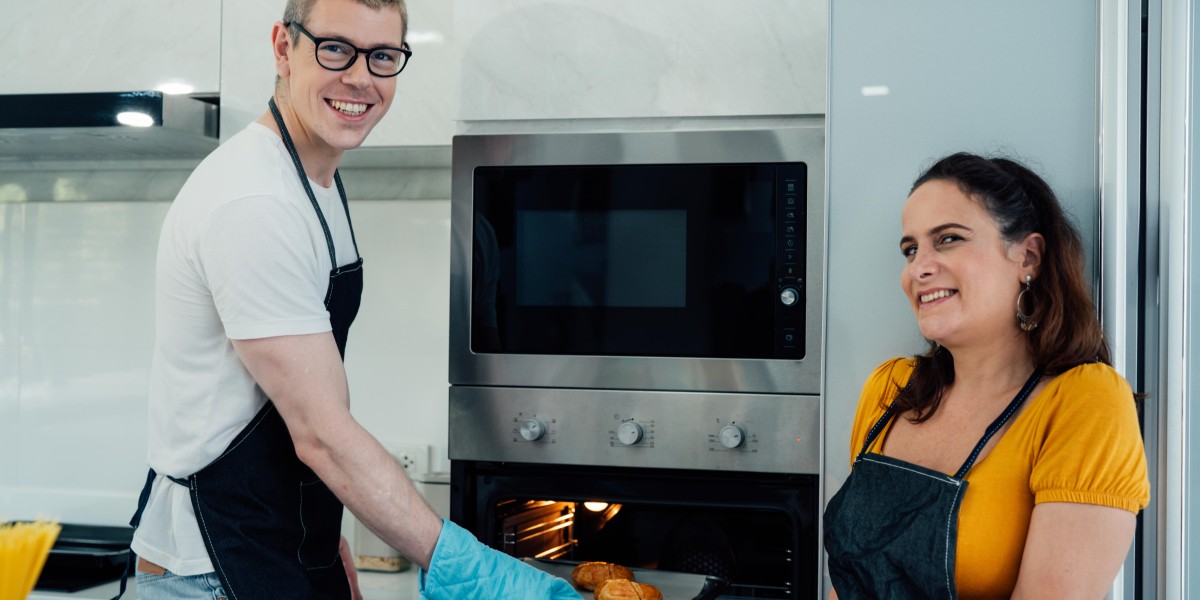The Ultimate Guide to Built-in Cookers and Hobs: Efficiency Meets Style in Modern Kitchens
In the world of kitchen design and functionality, built-in cookers and hobs have actually quickly become popular options for house owners and cooking lovers alike. These appliances not just optimize kitchen space however also provide a modern-day visual that boosts the total visual appeal of cooking environments. This short article checks out the benefits, functions, and factors to consider associated with built-in cookers and hobs, providing a detailed guide for anybody seeking to optimize their cooking area.
What Are Built-in Cookers and Hobs?
Built-in cookers and hobs refer to kitchen appliances that are integrated into the cabinets, creating a seamless appearance. A built-in cooker normally includes both the oven and cooktop, while a hob is specifically the cooktop component, used to prepare food on the stovetop without a conventional oven compartment.
Types of Built-in Cookers and Hobs
| Type | Description |
|---|---|
| Induction Hobs | Use electromagnetic energy to heat pans directly, using accuracy and safety. |
| Gas Hobs | Use gas flames to supply heat, favored by numerous chefs for their control and adaptability. |
| Electric Hobs | Use an electric coil, ceramic, or smooth surface for even heating, capable of heat control. |
| Combination Ovens | Consist of convection, steam, and microwave performances in one system, maximizing adaptability. |
Benefits of Built-in Cookers and Hobs
- Space Efficiency: Built-in cookers and hobs maximize counter area, providing kitchen areas a less messy look.
- Visual Appeal: These appliances develop a smooth and modern-day kitchen style.
- Boosted Functionality: Many built-in units come with clever functions, such as touch controls and Wi-Fi connection.
- Personalization: They can be tailored to fit specific kitchen styles and designs, permitting for more creativity in kitchen planning.
- Easy Cleaning: Integrated designs often permit much easier cleansing and maintenance as compared to freestanding units.
Key Considerations When Choosing Built-in Cookers and Hobs
When picking the right built-in cooker or hob for a kitchen remodel or brand-new build, several factors should be taken into account:
Size and Configuration
- Cooktop Size: Consider the variety of burners you require based on cooking habits.
- Oven Capacity: Larger households or devoted bakers might need a larger oven.
Fuel Type
- Gas vs. Electric: The choice in between gas and electric may depend on individual cooking choices and existing home infrastructure.
Features and Functions
- Smart Technology: Many contemporary cookers come equipped with wise features that improve benefit.
- Self-Cleaning Option: Consider whether a self-cleaning function is essential for you.
- Security Features: Look for appliances that have child safety locks and automatic shut-off systems.
Expenses and Brands
- Spending plan: Built-in cookers and hobs can differ considerably in rate. Determine a spending plan and adhere to it.
- Brand Reputation: Research various brand names for dependability, efficiency, and warranty offerings.
Installation Requirements
- Expert Installation: Built-in units may need professional setup; ask about this aspect when purchasing.
- Space and Ventilation: Ensure your kitchen design can accommodate built-in designs, particularly for gas systems that need correct ventilation.
Regularly Asked Questions (FAQs)
1. Are built-in cookers more expensive than freestanding units?
Yes, built-in cookers and hobs usually involve higher in advance expenses due to their design and setup requirements. However, they can add worth to your home.
2. Can I set up a built-in hob myself?
While some house owners may try DIY installations, it is generally suggested to employ a professional, specifically for gas systems, due to security issues.
3. What is the life expectancy of built-in cookers and hobs?
Normally, built-in cookers and hobs can last anywhere from 10 to 15 years, depending upon use and maintenance.
4. Are induction hobs safe to utilize?
Yes, induction hobs are thought about safe as they just warm the pots and pans and not the surface area around them, reducing the danger of burns.
5. How do I keep my built-in cooker?
Regular upkeep includes cleansing surface areas after usage, inspecting seals and vents, and guaranteeing correct working through occasional professional assessments.
In conclusion, built in cooker and hob-in cookers and hobs offer a modern-day, trendy, and effective solution for contemporary kitchen areas. With numerous choices available, consisting of different fuel types, setups, and advanced features, house owners can find an appliance that suits both their cooking needs and visual preferences. By considering the elements laid out in this guide, anybody can make an educated choice that improves their kitchen and cooking experience.

Additional Considerations
To even more help in your kitchen remodelling or new build, think about:
- Energy Efficiency Ratings: Look for energy-efficient designs to save money on utility costs.
- Guarantee and Service Plans: Assess the service warranty period and service strategies used by the producer.
Eventually, buying a built-in cooker or hob can reinvent your cooking experience and elevate your kitchen's design.








